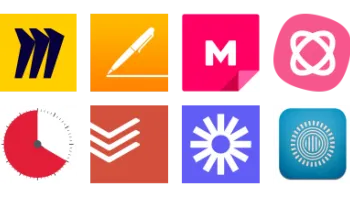Take a look inside 5 images
Goalbook Pathways
Pros: Usefully unpacks CCSS and offers quality teaching strategies for differentiation.
Cons: Could benefit from fleshed-out lesson plans and a step-by-step protocol for custom-designing pathways for any standard.
Bottom Line: Currently a rich reference for teachers looking to demystify differentiation and CCSS, Goalbook Pathways will be truly worth the investment when it's also a place for creation.
Prepare to have your brain stretch –- in a good way -– upon your first encounter with the lingo and levels of each pathway. Give yourself some time to simply read and process. Once you're ready, identify a standard that's on your plate (but not yet on the site), and sketch out your own pathway; use the Goalbook-created pathways as models, and rely on the strategy list and wizard to support brainstorming. Try working with a grade-level team (each second-grade teacher focuses on one geometry standard) or in content pairs (sixth-grade science and ELA educators work on technical texts). Definitely include your special education and English-as-a-second-language staff.
Even if you’re not tackling CCSS, the Pathways provided through Goalbook may help you better envision what the same-but-different learning targets might look and sound like and how to apply varied instructional strategies to different audiences. Use the site and its research base to launch a building-level PLC, and make differentiated instruction a common classroom reality.
Goalbook Pathways is a reference site for teachers looking for actionable strategies for differentiating Common Core (CCSS) instruction. The "Strategies" section of the site connects teachers to universal design for learning-based instructional methods (UDL). “All Strategies” is an interactive list with definitions, examples, and tips. Alternatively, teachers can use the “Strategy Wizard” to filter approaches. These two resources are found in GoalBook Toolkit, a parallel product tuned for special education teachers.
What's unique to Goalbook Pathways is, well, its "pathways." These unpack CCSS, providing learning objectives for all four Depth of Knowledge levels. There also are corresponding instructional activities (geared to three levels and linked to the “Strategies” pages), sample assessments, and even standards alignment. There's a solid but not comprehensive amount of pathways offered across all grades but not covering all domains or standards.
Goalbook Pathways provides teachers with articulated achievement goals and supportive teaching strategies. Especially in the face of CCSS, this kind of explanatory resource -– presented via a crisp, clear design -– is a solid option for educators looking for useful information on how to tackle differentiated CCSS instruction. Further, the site gracefully explains instructional jargon so all teachers can understand, and therefore support, all kids.
Unfortunately, avenues for creating or editing pathways are wanting; there’s not even a print-friendly copy on which to scribble. Being able to download the site’s template and use its strategy list would be brilliant. For most of us –- no matter how spectacular the resource we're handed -– truly digesting CCSS and differentiating for our classes requires us to be active authors.













